The MAES is committed to providing a better life for all Minnesotans by funding locally-driven, long-term research that is also of national and international importance. Research focuses on the needs of stakeholders across Minnesota and capitalizes on the areas of excellence within our partner Colleges.
These research areas address issues of critical importance to various Minnesota industries while also aligning with USDA-NIFA's nine science emphasis areas. In 2020, we also added a short-term critical research issue related to the COVID-19 pandemic.
Critical Research Areas
- Crop, Plant and Food Development and Production
- Integrated Animal Systems
- Water Resources and Quality
- Natural Resource Management
- Sustainable Energy and the Bioeconomy
- Health and Nutrition
- Resilient Communities and Economies
- Building Strong, Resilient Families
- Youth Development
- COVID-19 Response and Recovery
As part of its annual research reporting, in 2019 MAES — in collaboration with U of M Extension — established state-defined critical issues to organize its research reporting and mission around. These critical issues spotlight areas of focus and excellence within our partner Colleges, the needs of stakeholders across various Minnesota industries while also recognizing the importance of, and aligning with, USDA-NIFA's nine science emphasis areas. In 2020, a short-term critical issue was added related to the COVID-19 pandemic.
Crop, Plant and Food Development and Production
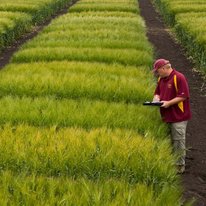
The need to feed a growing population while preserving the environment is a key concern of the field of agriculture today. In Minnesota, crop and landscape plant industries contribute to the rural and state economy. The University of Minnesota focuses on improving productivity, profitability and environmental stewardship.
Research and Extension are committed to:
- Addressing pest and weed resistance for production, profitability and sustainability
- Helping farmers preserve soil health and use fewer inputs
- Identifying emerging trends and supporting agriculture niche markets
- Harnessing the power of computational analytics to improve production, profitability and sustainability (i.e. G.E.M.S. Platform)
- Utilizing new techniques for breeding and genetic improvements
Integrated Animal Systems
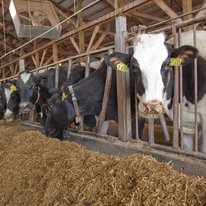
Minnesota's livestock industry includes dairy, poultry, swine and horse farms throughout the state. The University of Minnesota focuses on increasing the sustainability, profitability and quality of care across the livestock industry.
Research and Extension are committed to:
- Developing new vaccines and disseminating management practices to improve animal wellbeing
- Tracing how animal diseases spread, developing biosecurity recommendations, and disseminating best practices for systems that ensure the health and safety of livestock products
- Studying and disseminating systems for manure management and for tapping new markets
- Exploring how pathogenic microbes and bacteria affect animal health
Water Resources and Quality
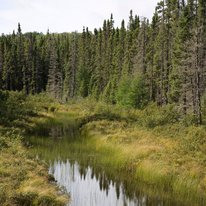
Renowned as the Land of 10,000 Lakes and the headwaters of the Mississippi River, Minnesota's waters are critical to the state's identity and economy. The University of Minnesota focuses on improving the health and biodiversity of lakes, rivers, streams and wetlands throughout the region.
Research and Extension are committed to:
- Using precision agriculture to optimize profitability and minimize non-point source pollution in watersheds
- Assisting with the control and management of aquatic invasive species
- Ensuring Minnesotans have access to safe drinking water
- Informing urban land use decisions, improving stormwater practices and educating local leaders and water resource professionals
Natural Resource Management
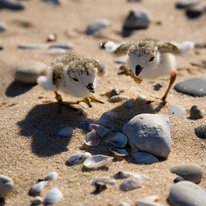
Minnesota is home to one of the most biodiverse land systems in the U.S. Minnesota's forests provide timber, wildlife habitat, recreation, wilderness and biodiversity to the state. The University of Minnesota focuses on improving environmental conservation across the state.
Research and Extension are committed to:
- Providing information to improve forest management and prairie restoration
- Controlling invasive species and protecting wildlife habitats on both public and private land
- Exploring ecology and how the whole system is affected by changes in climate and land management
- Increasing environmental stewardship and harnessing the power of citizen scientists to collect data and spread information
Sustainable Energy and the Bioeconomy
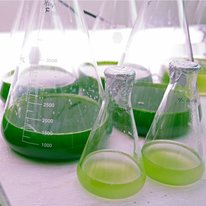
Minnesota is currently on track to meet renewable energy goals as the state continues to diversify its renewable energy landscape and bioeconomy. The University of Minnesota focuses on developing system-wide solutions that look at not only the output but inputs as well.
Research and Extension are committed to:
- Exploring new methods to produce biomass, biofuels and other forms of renewable energy
- Analyzing the supply-chain of existing and new renewable energy technologies and processes
- Discovering best practices to reduce overall energy usage at home, on the farm and in business
- Connecting individuals and communities to clean energy projects (CERTS)
Health and Nutrition

Minnesota's poverty rate is low, but statistics mark some of the largest health and economic disparities in the country. The University of Minnesota focuses on making systemic changes that promote the health and wellbeing of Minnesotans.
Research and Extension are committed to:
- Addressing family and community systems to support food knowledge, accessibility and affordability
- Addressing relationships between diet, nutrition, physical activity and human disease
- Developing methods to help the food infrastructure provide safe and healthy food that people desire
- Addressing critical issues affecting physical and mental health; e.g., drug/alcohol abuse, aging, economics
Resilient Communities and Economies
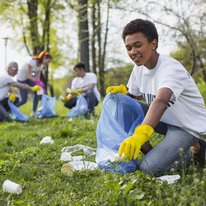
External forces such as globalization and demographic shifts can't be controlled, but local responses can. Resilient communities grow local leadership, plan for a sustainable future and support local businesses.
Research and Extension are committed to:
- Informing community and economic development decisions
- Examining issues affecting communities and economies in Minnesota and the world
- Strengthening the confidence and competence of leaders
- Helping local decision-makers strengthen civic engagement
- Educating businesses, especially in the volatile agriculture and tourism sectors
Building Strong, Resilient Families

Resilience is the process and outcome of successfully responding to stressful experiences. Families under stress can improve resiliency through access to high-quality education and skill development that improve long-term outcomes.
Research and Extension are committed to:
- Supporting stressed families through collaboration with trusted systems
- Providing parent education that builds resilience in families
- Developing financial literacy education that is accessible to low-income families
- Examining new family dynamics, trends and conditions
- Being responsive to current issues facing families
Youth Development

Of the million young people living in Minnesota, 35 percent are under-engaged in enrichment experiences and 40 percent report not having a meaningful connection to a caring adult in their community. Many of these youth, of every age, gender, race, socio-economic status, religion and family type, are not on a positive pathway.
Research and Extension will:
- Give youth places to learn, lead and build connections
- Expand programs so that more youth have the confidence, resilience and compassion they will need as they become adults
- Train youth-serving organizations and teachers in best practices using a research-based approach
- Collaborate with community partners to ensure that Minnesota's youth build the skills they need to thrive
COVID-19 Response and Recovery

The COVID-19 pandemic is affecting the nation’s food and agricultural systems from production to consumption. There is an immediate need to develop and deploy rapid, reliable, and readily adaptable strategies across the food and agriculture enterprise to help mitigate the impact of the pandemic, aid in post-pandemic recovery and develop protocols to help limit the impact of future threats to public health.
Research and Extension will:
- Enhance and fill knowledge and information gaps related to COVID-19 and how it is affecting, and could affect, the food and agricultural industry and the mental and physical health of Minnesotans
- Develop best practices, models, diagnostic tests, and personal protective equipment that will help ensure the safety of food and foodservice workers
- Catalog the economic impact of COVID-19 in Minnesota and develop strategies and models to mitigate the impact on rural Minnesotans and small-scale producers
- Provide timely education that supports adaptation to new conditions at home, in communities, in businesses and on farms